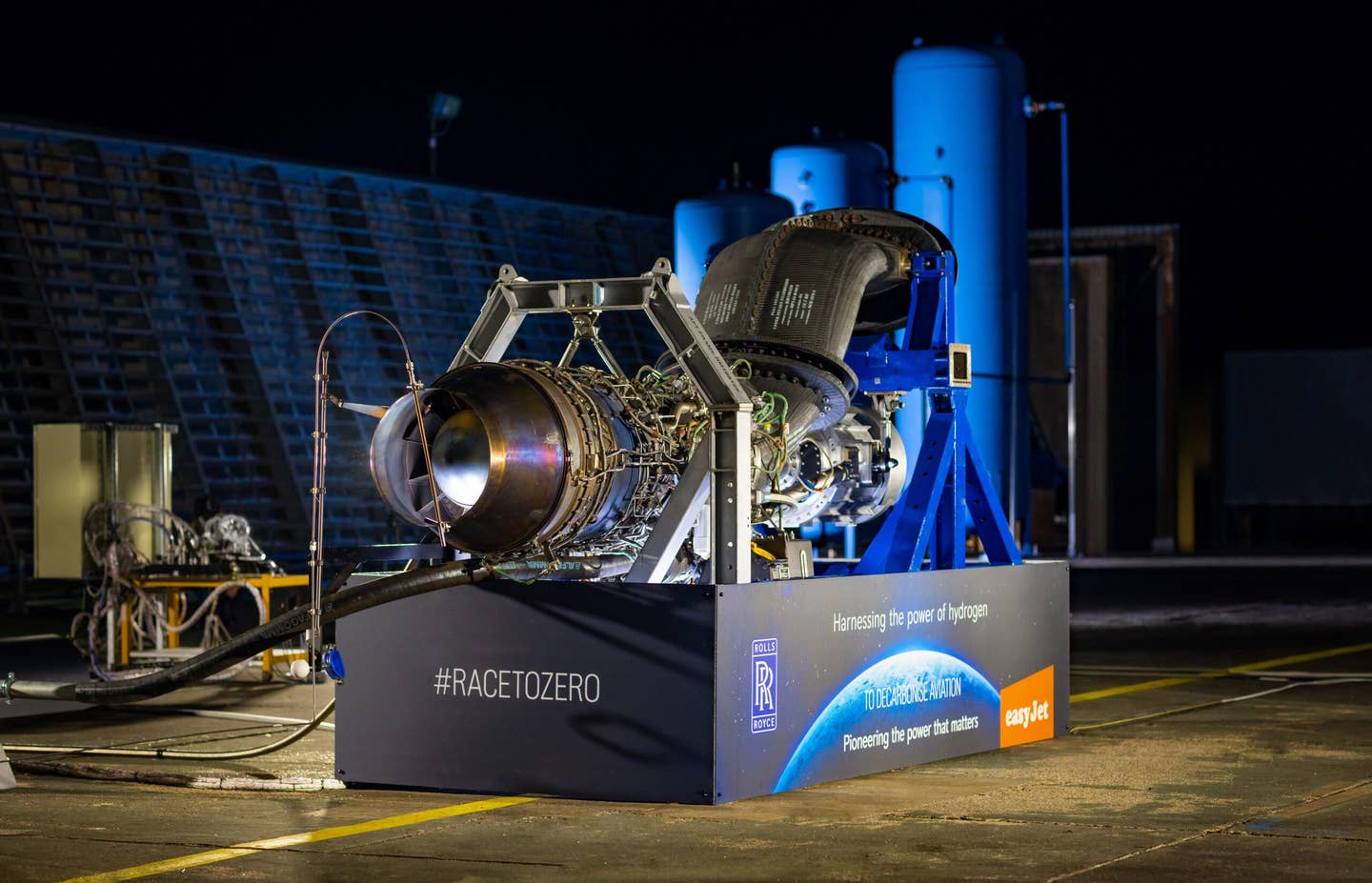Rolls-Royce Runs AE 2100 Engine On Hydrogen
Rolls-Royce announced on Monday that it has successfully run a converted Rolls-Royce AE 2100-A regional aircraft engine on hydrogen. The ground test was conducted in partnership with U.K.-based budget airline…

Image: Rolls-Royce
Rolls-Royce announced on Monday that it has successfully run a converted Rolls-Royce AE 2100-A regional aircraft engine on hydrogen. The ground test was conducted in partnership with U.K.-based budget airline easyJet at military aircraft testing site MoD Boscombe Down in Amesbury, England. According to the companies, additional testing is in the works with the long-term goal of running hydrogen-powered flight tests.
“The success of this hydrogen test is an exciting milestone,” said Rolls-Royce Chief Technology Officer Grazia Vittadini. “We only announced our partnership with easyJet in July and we are already off to an incredible start with this landmark achievement. We are pushing the boundaries to discover the zero carbon possibilities of hydrogen, which could help reshape the future of flight.”
Further rig tests are next on the list after data gathered during initial testing is analyzed. The companies are then planning to conduct a full-scale ground test using a Rolls-Royce Pearl 15 engine. Rolls-Royce and easyJet noted that their partnership is “inspired by the global, UN-backed Race to Zero campaign that both companies have signed up to, committing to achieve net zero carbon emissions by 2050.”






